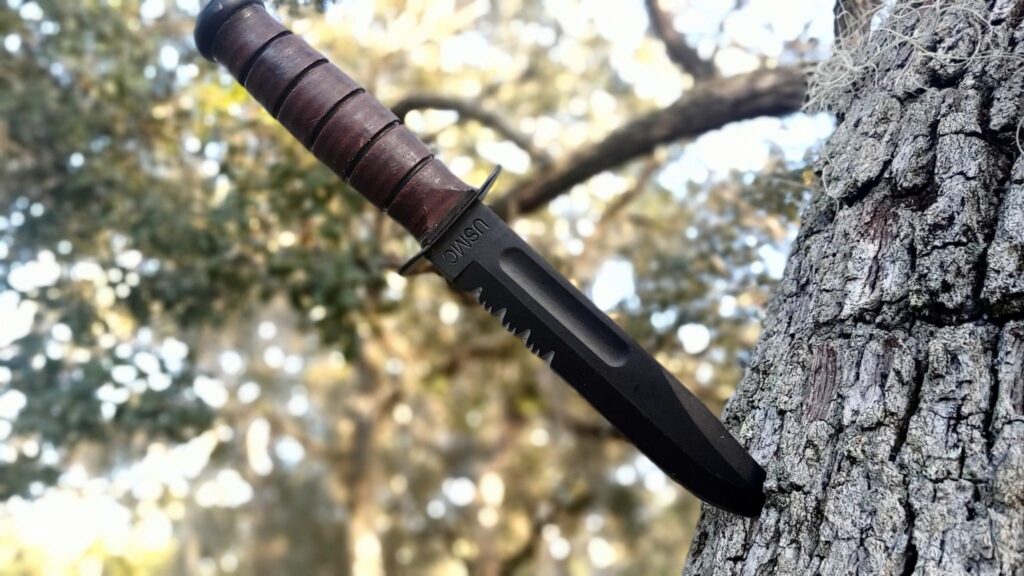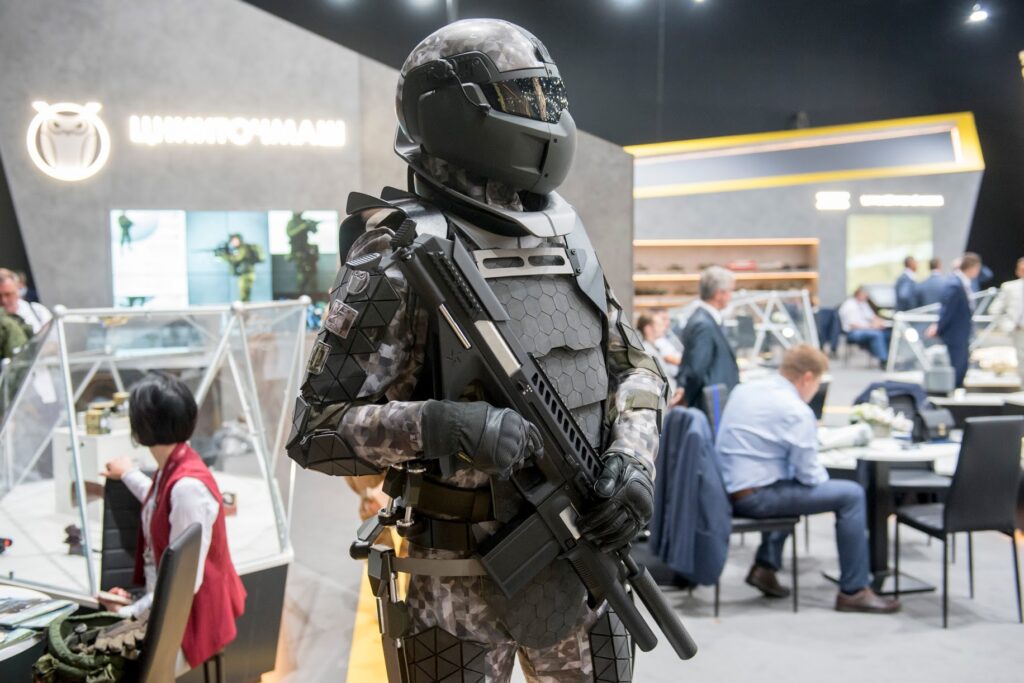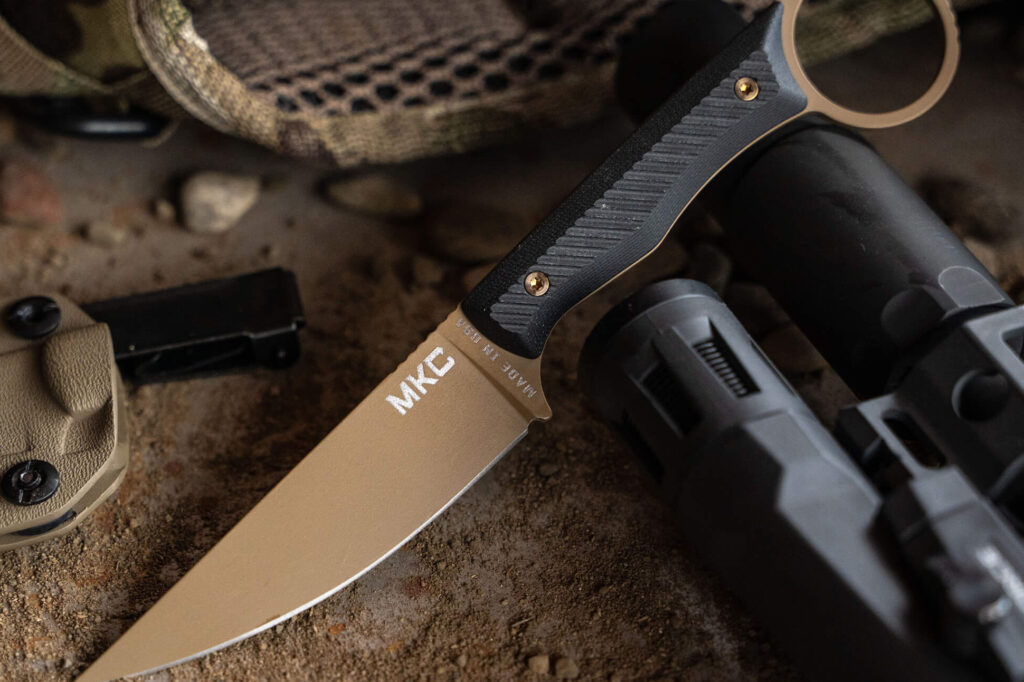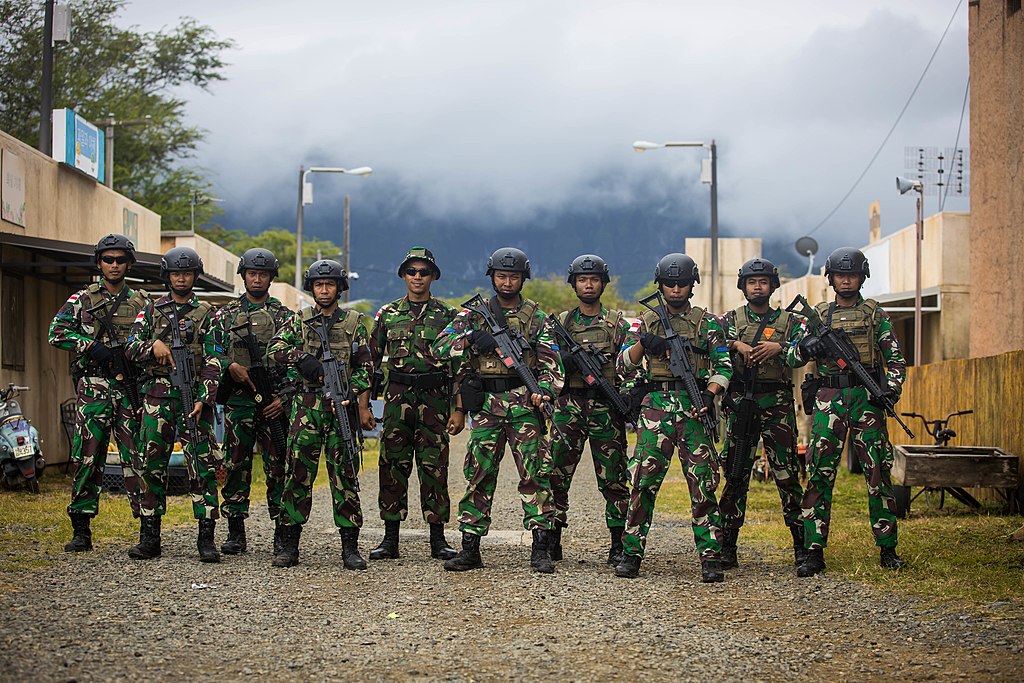The Ka-Bar – A USMC Icon
- By Travis Pike
Share This Article

When someone say the Marine Corps, there are likely a number of images that come to mind. The classic Eagle, Globe, and Anchor, an English Bulldog, the Dress Blues, and of course, the Ka-Bar fighting knife. Coming into World War 2, the USMC and the Army lacked a sufficient fighting knife. Many were adopted in limited numbers, but none seemed to fit the needs of the Marine Corps until 1942 when the Ka-Bar was adopted by both the US Navy and the United States Marine Corps. The Marine Corps is rarely one to waste words, and the Ka-Bar became the Knife, Fighting Utility.
Breaking down the Ka-Bar
What’s a Ka-Bar? Well, it’s a rather large knife design that sports a 7-inch blade with a clip point tip. The handle gives the Ka-Bar a very distinct look and features a leather washer design that provides a low tech means to achieve an excellent grip. The blade is 1.188 inches wide and .165 inches thick.

The Ka-Bar pulls no punches in design and size. Keep in mind, after World War 1, the expectancy for close quarter’s combat was quite high, so the Ka-Bar was designed to be a fighting knife. This explains the long blade and clip point tip. The blade’s design makes it very conducive for slicing and dicing against the enemies of America. The length of the blade allows you to penetrate the body deeply from any angle.

In general, the Ka-Bar’s design is also one that excels as a tool. Not only could it fight off an enemy, but it could chop and cut through branches, small trees, limbs, and more. It could dig holes, break the ice, and the pommel could drive tent stakes. The Ka-Bar is a knife designed to work, and generations of Marines have certainly put them to work.
The Ka Bar’s Curious History
The Ka-Bar started serving with the USMC in 1942, but it had a long life prior to the Marine Corps. Ka-Bar is both the name of this design, as well as the company that produces the knife. Ka-Bar produced various knives in their time, and vintage ads show the Ka-Bar name attached to folding knives, switchblades, and more.

The name Ka-Bar isn’t random. The legend goes that an illiterate trapper wrote a letter to United Cutlery Co, the original designer of the Ka-Bar, telling the story of his exploits. The knife in the trapper’s story is the Ka-Bar we all know and love. The story tells of the man facing a wounded bear, and when his rifle failed, he finished the bear with his knife. The letter was written poorly, and the phrase ‘k a bar’ was translated to kill a bear. Thus the knife became the Ka-Bar. Is the story true? Who knows, but it’s a charming part of this knife’s history.
The knife served well beyond World War 2. In fact, my unit’s armory still had a handful of old school Ka-Bars secured away. While they remained unissued, they still serve with their original leather sheaths and all. The knife is seen attached to Marines throughout conflicts across time, from WW2 to the War on Terror.

If Marines go somewhere, the Ka-Bar follows. Marines often privately purchase the blade and carry it to war and back without complaint. The one presented here is my personal purchase. I purchased right before I hit boot camp, and I carried it everywhere. It’s been around the world twice, and while it never served it’s fighting knife purpose, it was incredibly handy. The current issue, USMC bayonet, the OKC-3S, is without a doubt inspired by the original Ka-Bar.
Does Old School Cool Still Hold Up?
Does the Ka-Bar design hold up in 2020? Well, sure, but as things tend to happen, better knives do exist. There are better steels and knives more suited to modern needs. The Ka-Bar has a rat-tail tang, which isn’t optimum for durability and strength. The high carbon steel gets ultra-sharp and holds an edge, but it a little brittle compared to something like 154 CM.

Also, a fighting knife isn’t a tool needed these days. Like the bayonet, it stands around, stubbornly refusing to go quietly into the night. The chance of using them as fighting knives is about the same chance as being struck by lightning. This being said, the large size of the Ka-Bar is no longer necessary, and knives with 3.5 to 5-inch blades are lighter, easier to carry, and overall easier to use for utility orientated tasks.
This isn’t me hating on the Ka-Bar. I can testify from experience that the Ka-Bar is still a fine knife for military service. It hacks, chops, and chews through everything from small trees to MREs. It’s not a perfect knife, but its near-century of use is a good testament to the design and why the Ka-Bar is a beloved icon of the USMC.
Related Posts
Sandboxx News Merch
-

‘AirPower’ Classic Hoodie
$46.00 – $48.00 Select options This product has multiple variants. The options may be chosen on the product page -

‘Sandboxx News’ Trucker Cap
$27.00 Select options This product has multiple variants. The options may be chosen on the product page -

‘Sandboxx News’ Dad Hat
$27.00 Select options This product has multiple variants. The options may be chosen on the product page

Travis Pike
Travis Pike is a former Marine Machine gunner who served with 2nd Bn 2nd Marines for 5 years. He deployed in 2009 to Afghanistan and again in 2011 with the 22nd MEU(SOC) during a record-setting 11 months at sea. He’s trained with the Romanian Army, the Spanish Marines, the Emirate Marines, and the Afghan National Army. He serves as an NRA certified pistol instructor and teaches concealed carry classes.
Related to: Gear & Tech

No, Russia’s futuristic Sotnik armor isn’t real

What does a Marine veteran think of Netflix’s ‘Rebel Ridge’?

Montana Knife Company enters the tactical knife realm

Indonesia’s Pindad SS2 – Service rifles from around the world
Sandboxx News
-

‘Sandboxx News’ Trucker Cap
$27.00 Select options This product has multiple variants. The options may be chosen on the product page -

‘AirPower’ Classic Hoodie
$46.00 – $48.00 Select options This product has multiple variants. The options may be chosen on the product page -

‘AirPower’ Golf Rope Hat
$31.00 Select options This product has multiple variants. The options may be chosen on the product page -

‘Sandboxx News’ Dad Hat
$27.00 Select options This product has multiple variants. The options may be chosen on the product page
